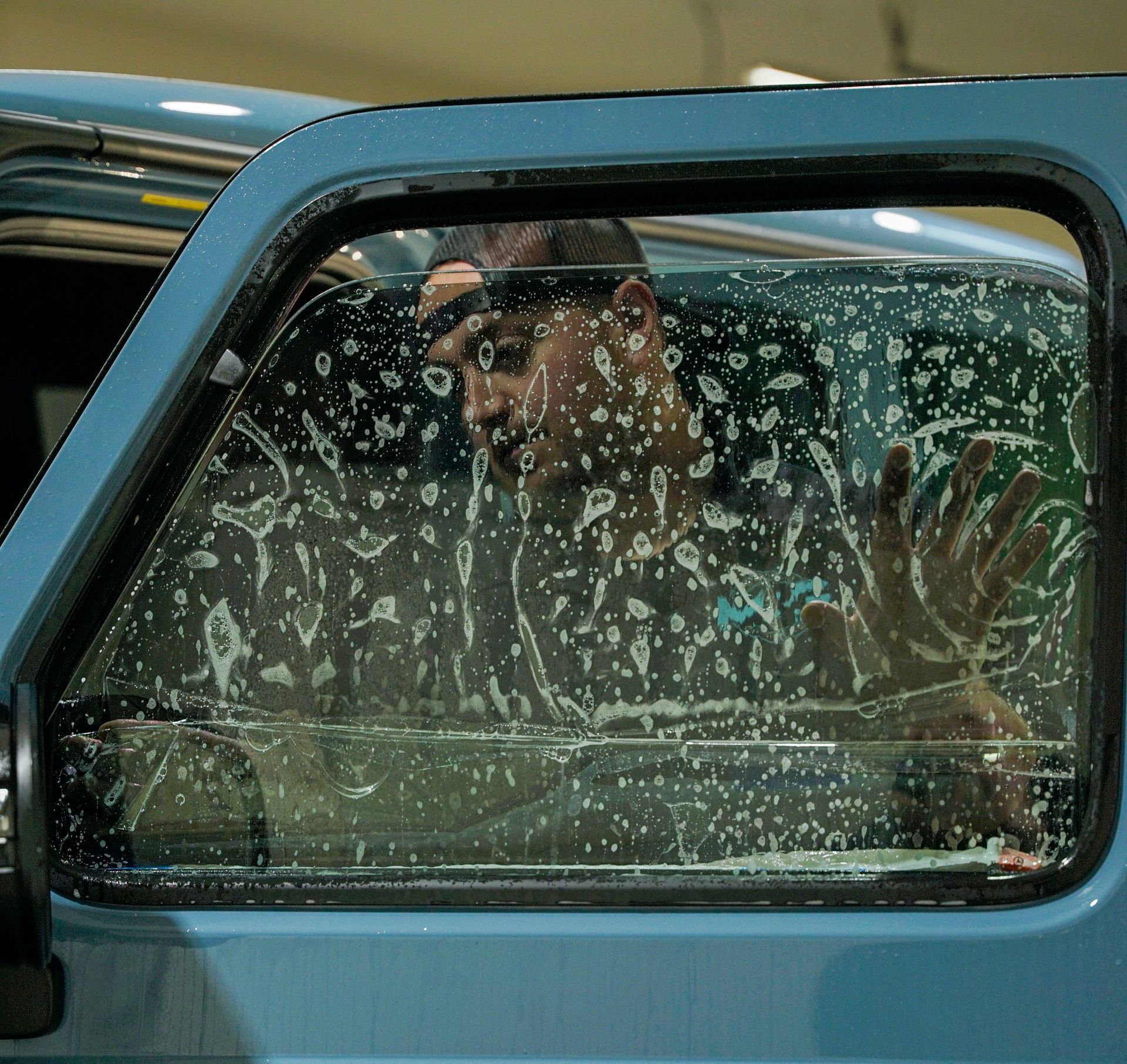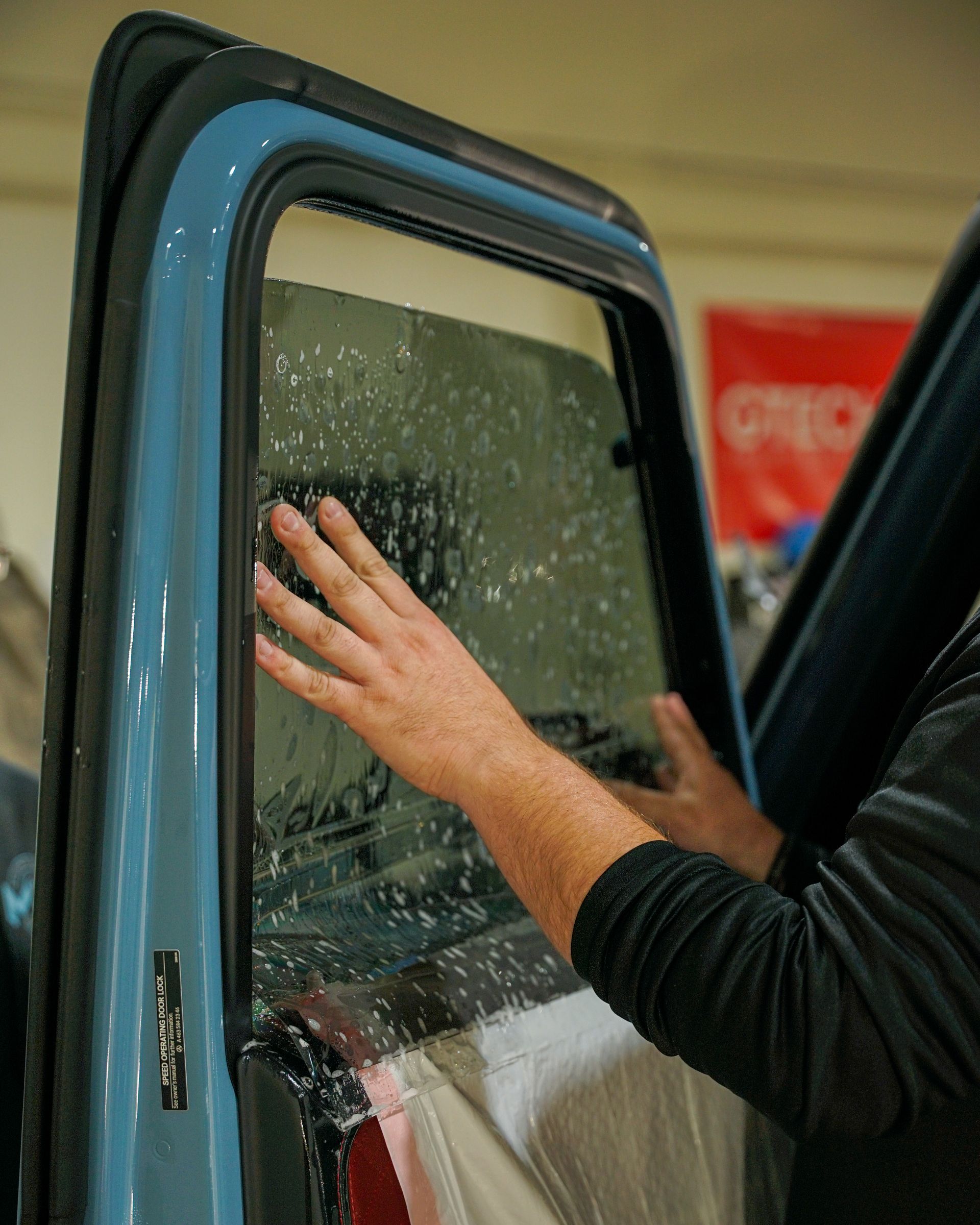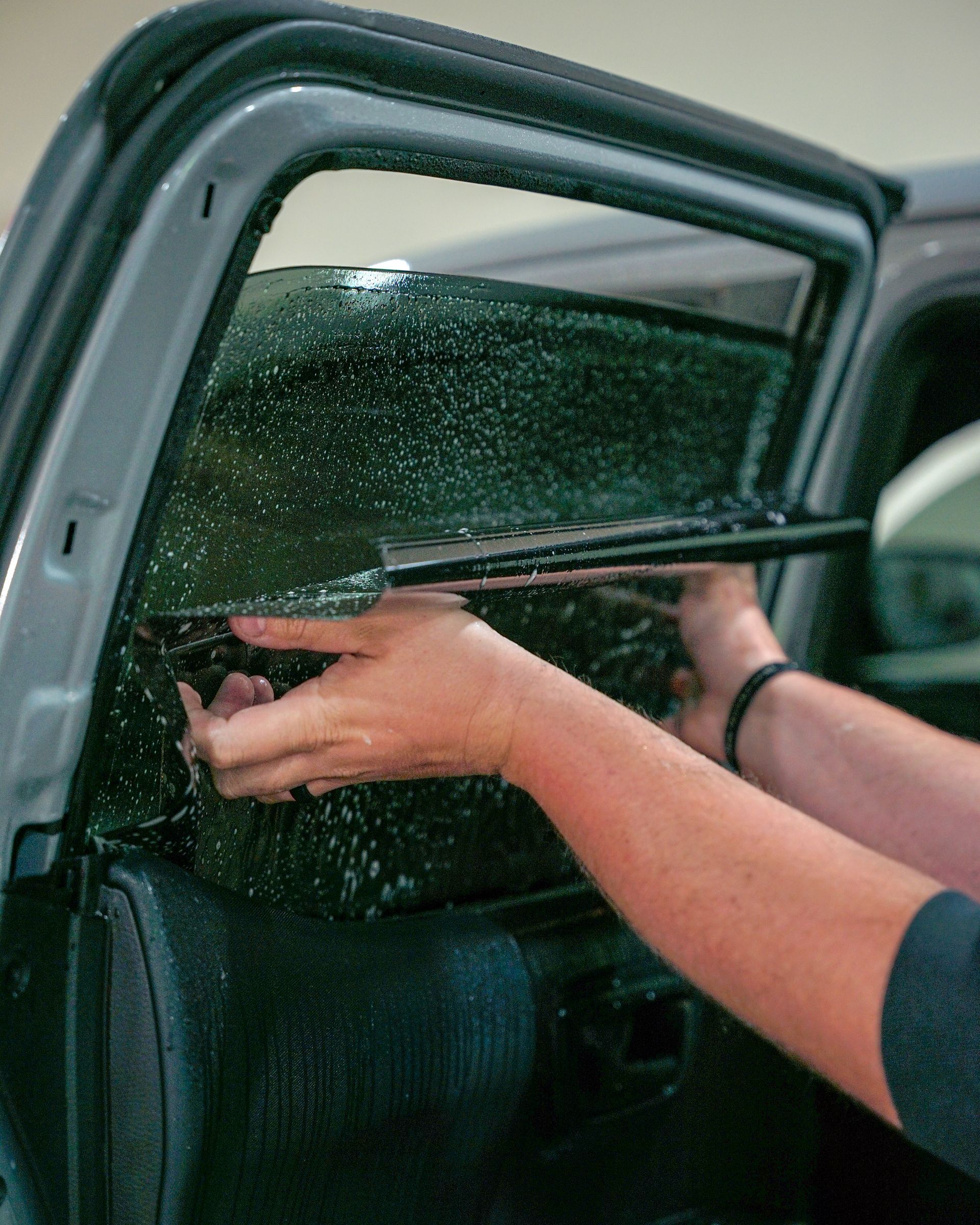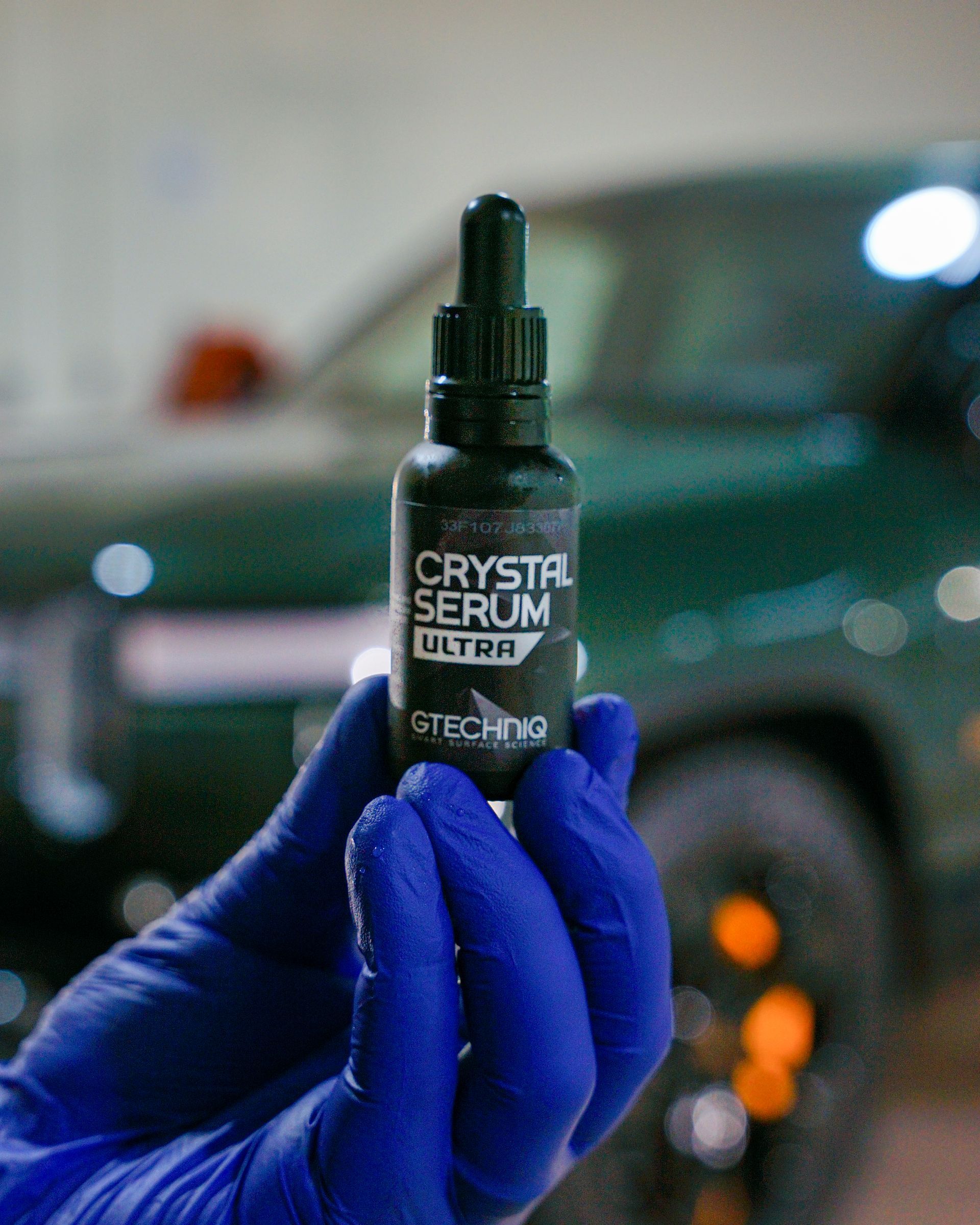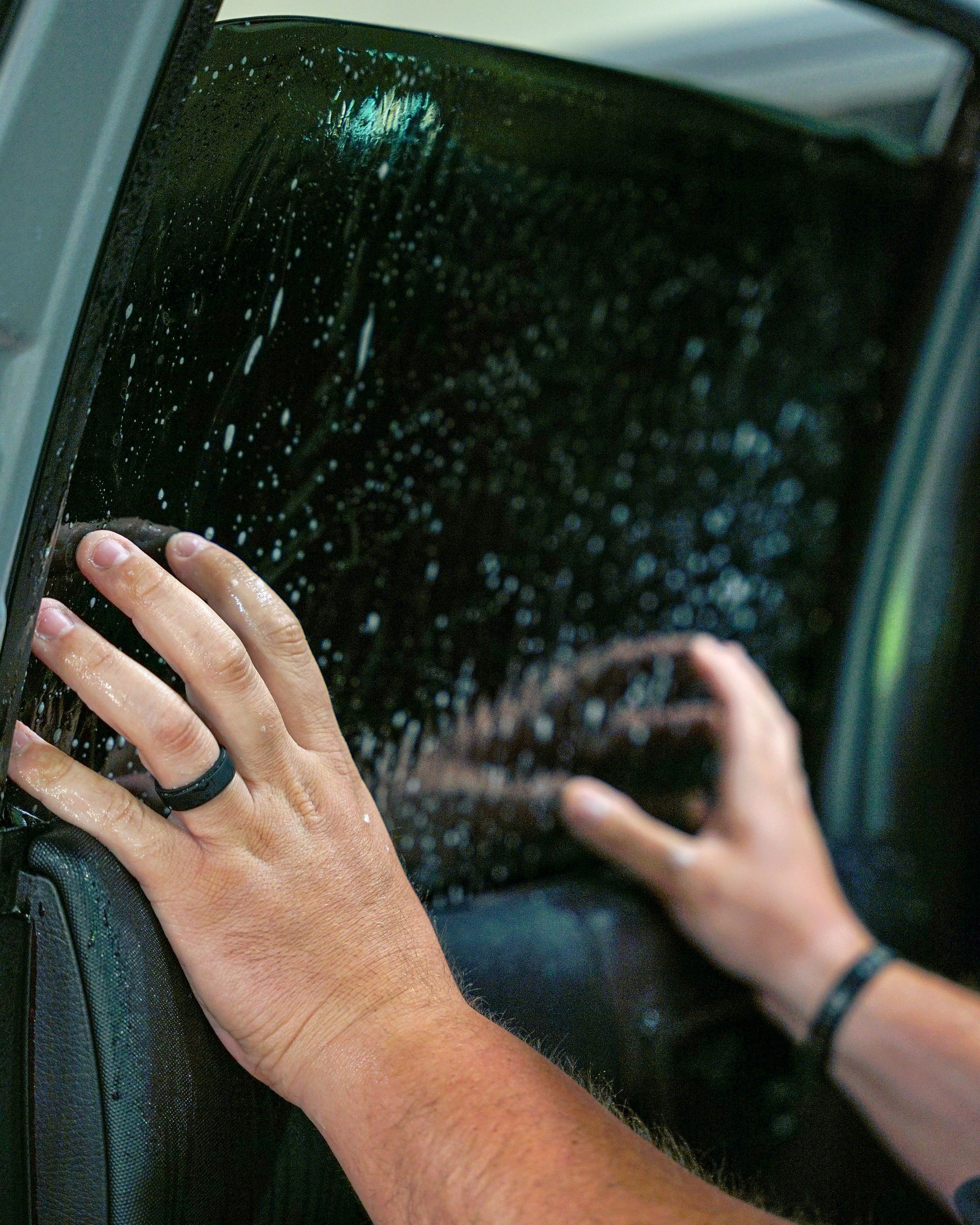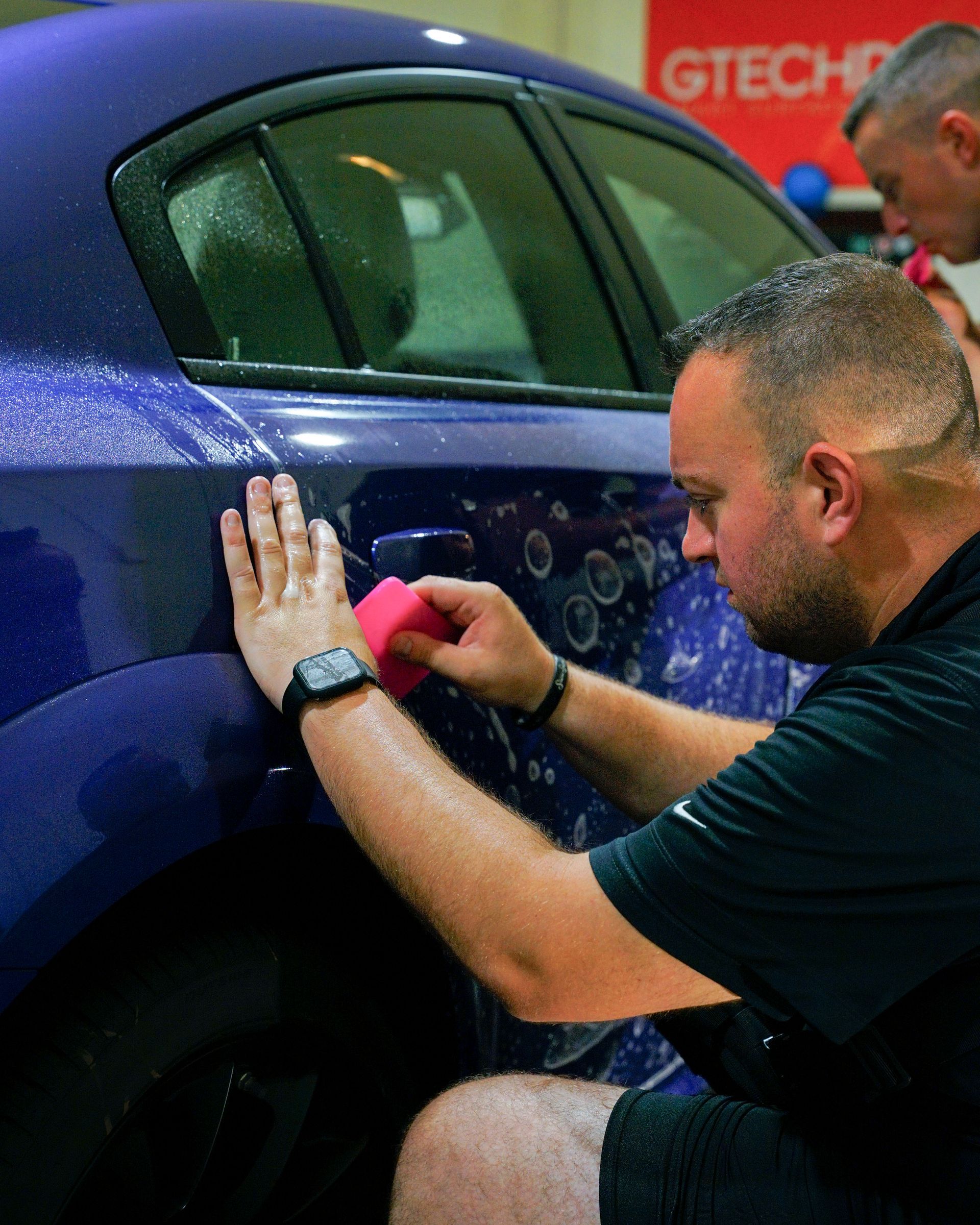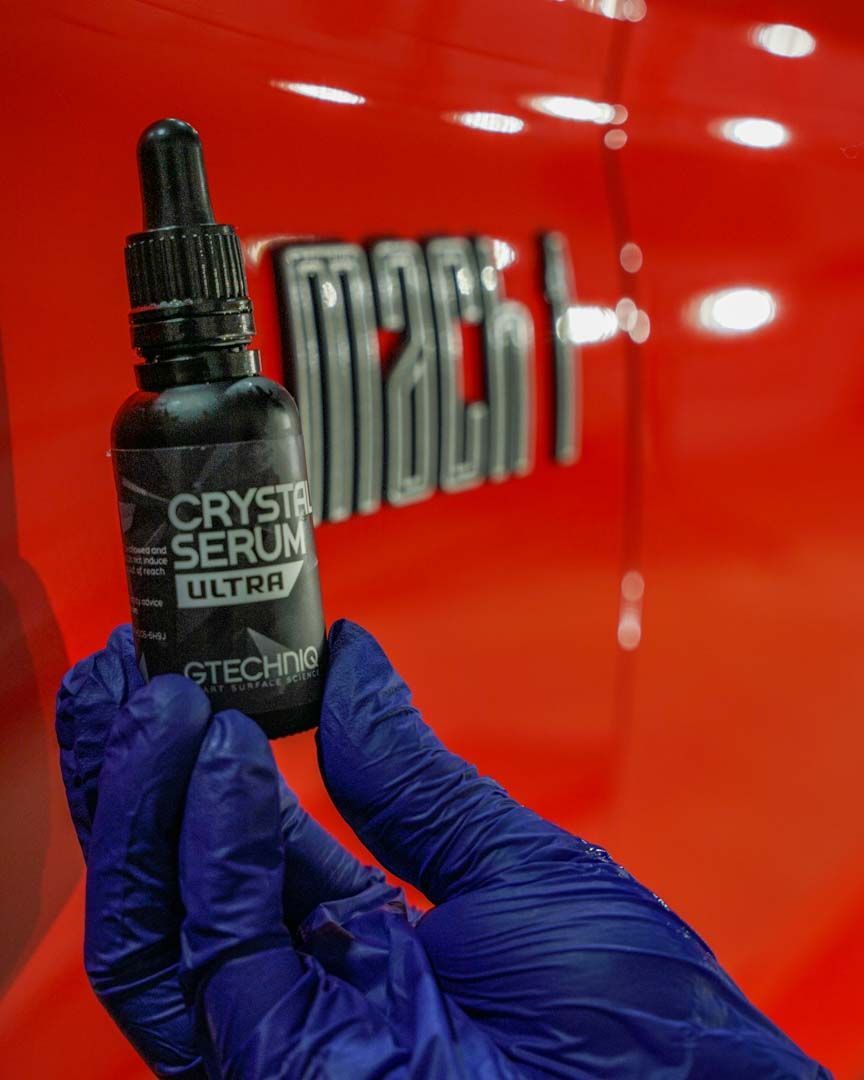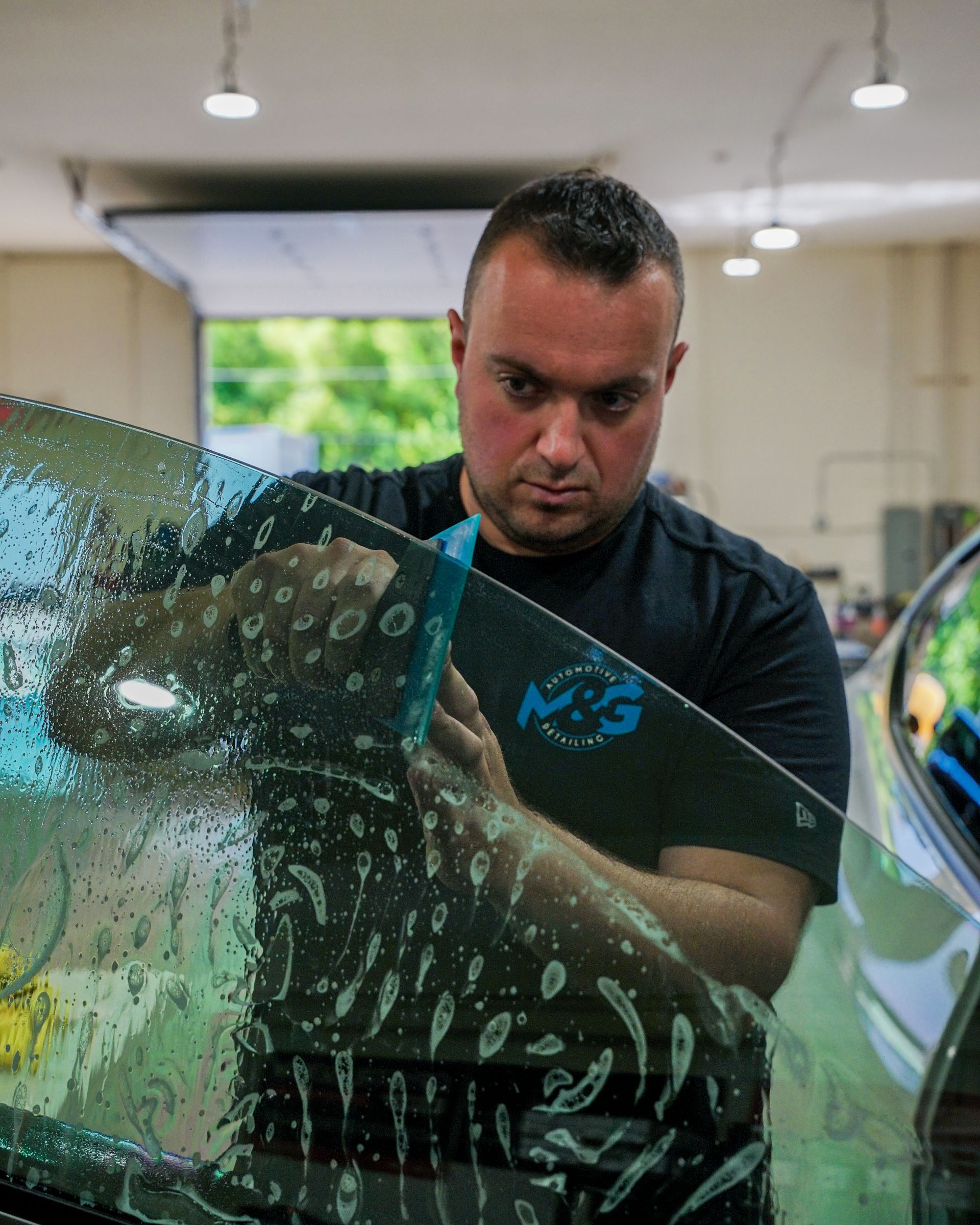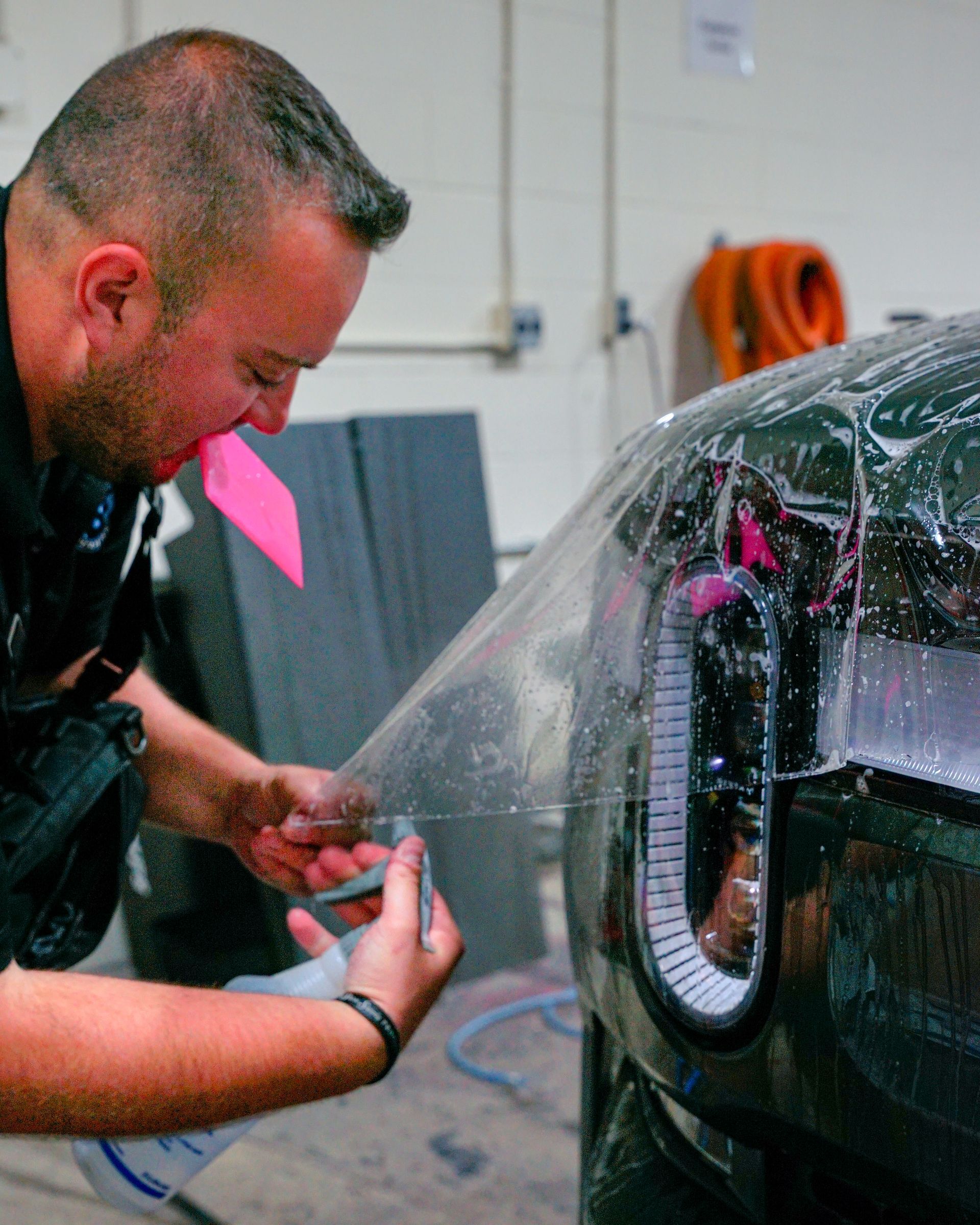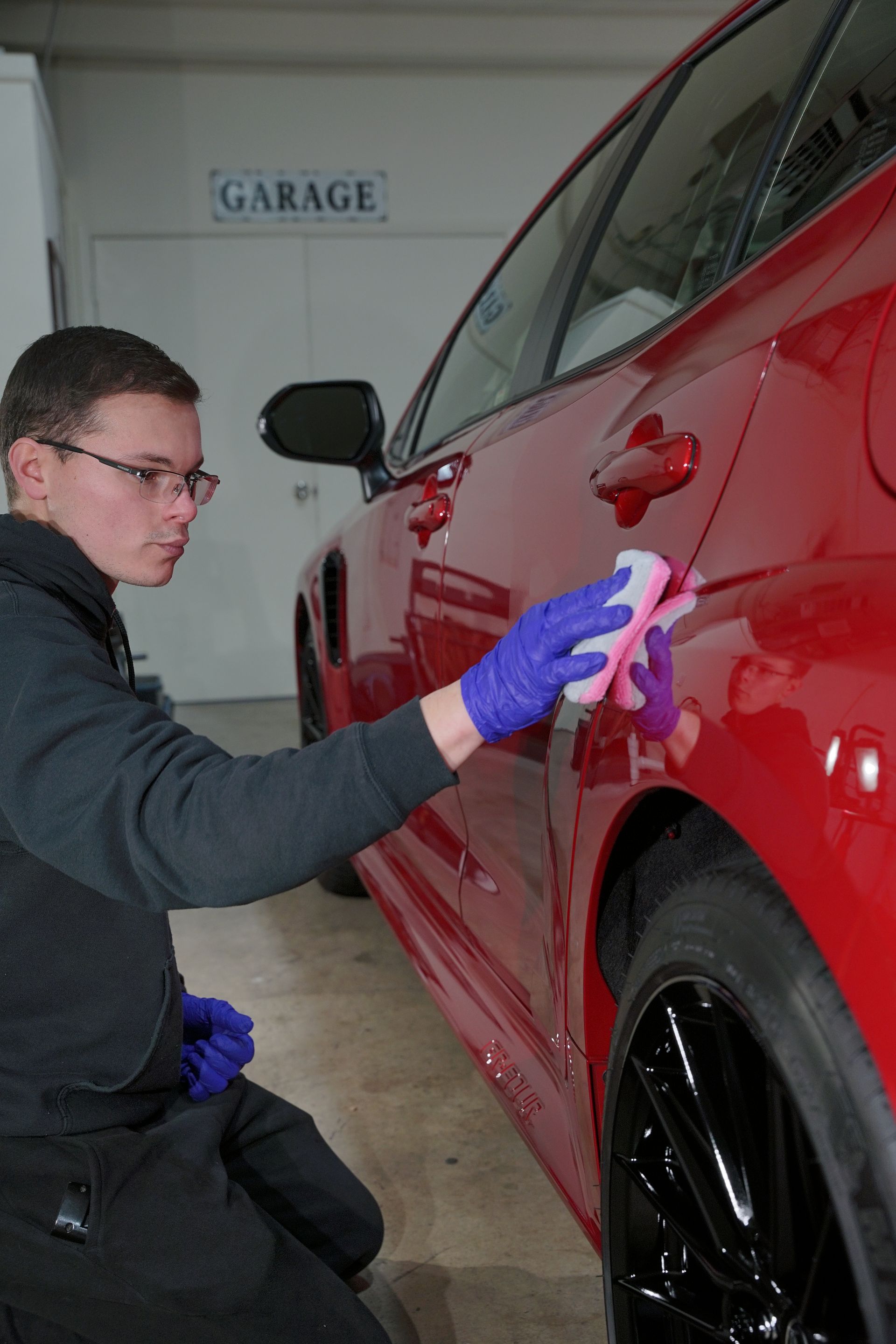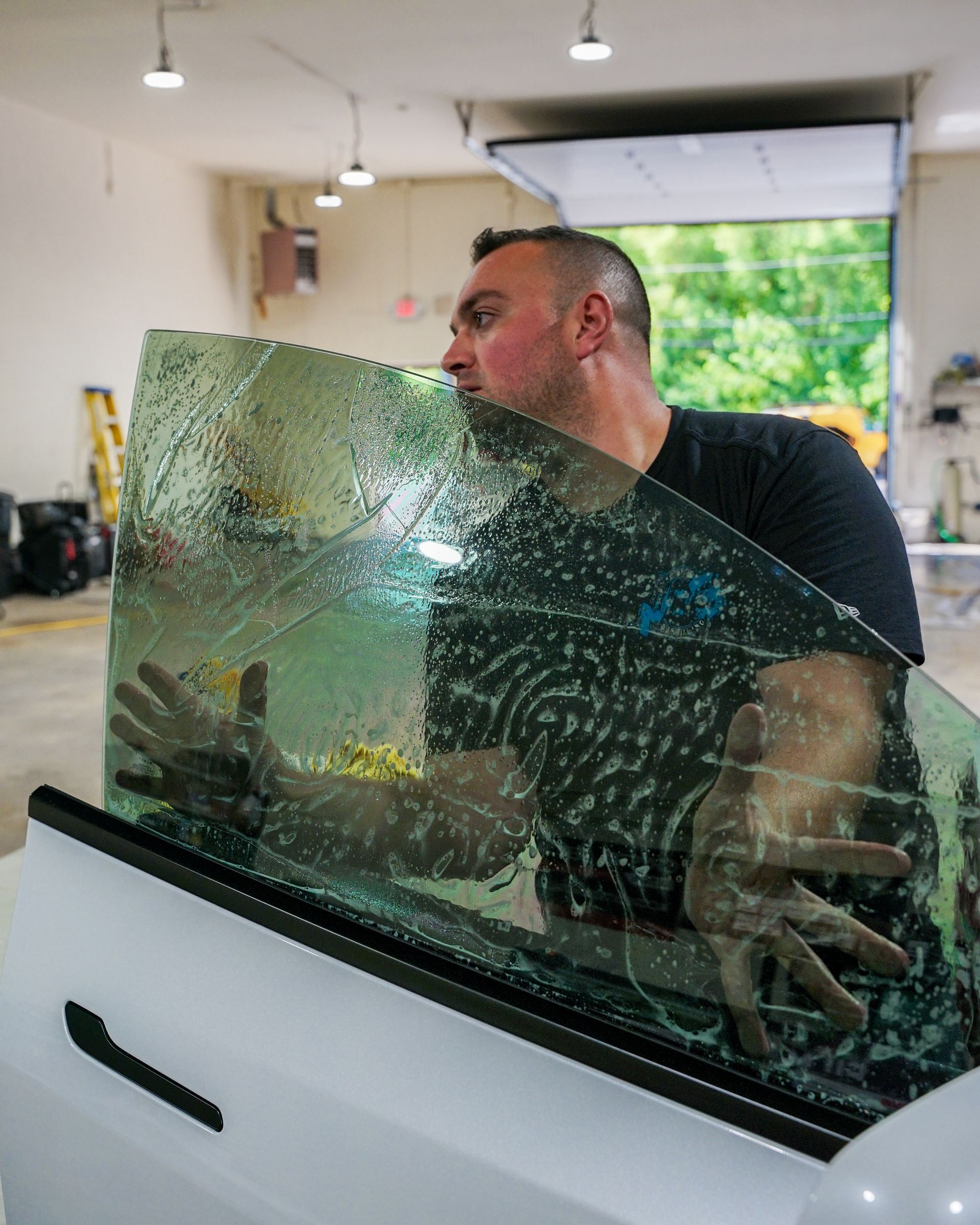Debunking Common Myths About Vehicle Window Tinting: Separating Fact from Fiction
Vehicle window tinting is subject to many misconceptions. First, not all tints are created equal; state laws differ on acceptable darkness levels and cheaper tints may not provide the same durability or UV protection as their higher-end counterparts. You'll be surprised to learn that seasonal weather isn't a barrier to tint application either! Professional tinting can even enhance visibility by cutting down on glare. Brace yourself for more enlightening truths ahead.
The window tinting experts at M&G Automotive Detailing address prevalent misconceptions such as the belief that any degree of darkness in tints is permissible, the notion that window tint application should only be done in certain weather conditions, and the myth that all tints offer similar quality. Additionally, it clarifies the significance of state-specific regulations when it comes to window tinting and darkness levels.
Five Common Myths About Car Window Tinting
When it comes to car window tinting, common misconceptions are as prevalent as the practice itself. Let's unravel these myths and get to the truth.
Myth 1: Tint darkness is the same for all windows
Tinting regulations vary across states in the US, meaning front and rear windows can have different darkness restrictions. Darker tints reduce visibility and can make driving more dangerous. Understanding these differences is crucial to ensuring compliance with local laws and regulations while enhancing safety and visibility on the road. The variability among states underscores the need for clear knowledge of local tinting laws.
Myth 2: Tint in winter is not effective
Window tinting can be done safely and with good results in the winter. The cold weather may slightly lengthen the drying time, but it does not affect the quality of the tint. Cold temperatures won't compromise the finished product if proper techniques are used during installation. The myth debunked here highlights the importance of choosing experienced technicians with expertise in all seasons.
Myth 3: Cheap tint is as good as high-quality film
Premium tints may cost more initially but they last longer and require less maintenance. Cheap tints are more likely to fade, bubble, and peel, leading to higher maintenance costs in the long run. While low-cost options seem attractive at first, premium tints retain color and clarity over time and save money in the long run. Illustrating this difference tangibly can influence consumers to prioritize quality over short-term savings when considering window tinting solutions.
Myth 4: Window tint negatively impacts visibility
Properly applied tints can improve visibility by reducing glare and eye strain. The role of professionally installed vehicle window tints in optimizing visibility deserves emphasis, underscoring their intention to enhance driving comfort and safety during various lighting conditions.
Myth 5: All window tints provide the same UV protection
Quality tints offer excellent UV protection, shielding from harmful rays. Premium window films provide superior UV defense, safeguarding vehicle occupants from skin damage and maintaining interior longevity. Highlighting distinct UV-protective features helps emphasize that not all tints are created equal, encouraging consumers to invest in solutions that offer comprehensive protection beyond aesthetic enhancements.
The misinformation surrounding window tinting can lead to confusion about its benefits and drawbacks. Now, we'll delve into a common question: Are darker tints less transparent?
Are Darker Tints Less Transparent?
One common misconception about window tints is that darker tints are less transparent, leading to reduced visibility, especially during nighttime driving. While it's true that darker tints can indeed reduce visibility, it's important to understand the role of visible light transmission (VLT) percentages in determining the level of light that passes through the window. The VLT percentage indicates how much light is allowed to pass through the tint. For instance, a 50% VLT means that half the light is able to pass through the window, while a 5% VLT only allows 5% of light to pass through. Therefore, a lower VLT indicates a darker tint, which can indeed affect visibility and make driving more hazardous, particularly in low-light conditions.
Different regions have specific legal regulations regarding VLT for vehicle window tints. These regulations are put in place to ensure that drivers maintain adequate visibility and safety on the road. Imagine driving at dusk with a darkly tinted window. As the light outside begins to fade, your ability to see obstacles or pedestrians becomes increasingly compromised. This creates a potentially dangerous situation, not only for you but for others around you as well.
It's crucial to recognize that while window tints offer benefits such as heat rejection and UV protection, excessively dark tints can impede your ability to see clearly in various driving conditions, including inclement weather or nighttime driving. Understanding the relationship between window tint darkness and transparency brings to light the significance of adhering to legal regulations and choosing tints that strike a balance between aesthetic appeal and safety.
The Truth About UV Protection With Tinted Windows
When it comes to our vehicles, we often prioritize maintaining the exterior. But what about safeguarding the interior from harsh UV rays? High-quality window tints play a crucial role here. They offer more than a sleek look; they serve as a barrier against harmful ultraviolet (UV) radiation, providing long-term benefits to both you and your vehicle. Standard vehicle window tinting can block up to 97% of harmful UV rays, which is close to the level of UV protection required for effective skin protection. This means that even standard window tinting provides a significant shield against UV radiation, offering considerable protection to you and your passengers.
Additionally, the amount of UV protection tinted windows provide can have a big impact on the temperature inside the car. Properly installed tints can reduce not only the heat but also protect your skin from excessive sun exposure during long hours on the road. This can prevent issues such as sunburns and long-term skin damage caused by UV radiation. When it comes to preserving your vehicle's interior, the fading of upholstery, dashboards, and other components due to UV damage is a serious concern. Premium tints offer enhanced protection against UV rays, extending the lifespan of your car's interior and saving you money in the long run by reducing the need for repairs or replacements.
Imagine yourself driving comfortably without having to continuously adjust vents or air conditioning settings to combat the heat and glare caused by direct sunlight. This is exactly what high-quality window tints offer—a controlled and comfortable environment inside your vehicle, making your travels more enjoyable. It's important to note that not all tints are created equal. Premium tints may cost more initially, but they are designed to last longer and require less maintenance. So when considering window tinting, remember that it's not just about aesthetics—it's about long-term protection and comfort for you and your vehicle.
Regulations Surrounding Window Tints
Tinting your vehicle's windows offers benefits such as blocking harmful UV rays, reducing heat inside the car, and adding an extra layer of privacy. However, it is crucial to adhere to the established regulations that vary from state to state in the US, ensuring that the tint of darkness is safe and legal. Each state has its own set of laws governing how dark you can tint your car windows. It's important to note that darker tints reduce visibility and can make driving more dangerous, especially at night or in low-light conditions. Violating these laws can result in fines and may even lead to inspections and testing of window darkness by law enforcement officers.
It's essential for vehicle owners to ensure compliance with the specific regulations in their state. Going beyond the permitted tint of darkness not only poses safety risks due to reduced visibility but also opens up the possibility of fines or legal consequences. Understanding these laws not only helps in avoiding potential penalties but also contributes to safer driving conditions for oneself and others on the road. It's wise for individuals to familiarize themselves with the details of their state's regulations and seek professional guidance if considering tinting their vehicle windows.
As tempting as it may be to opt for stylish dark tints, prioritizing safety and legality when making decisions about car window tinting is crucial. Understanding and complying with the specific regulations ensures both personal safety and legal adherence.
Premium vs. Cheap Tints: Is There a Difference?
When it comes to tinting your vehicle's windows, you may have noticed a wide range of prices for window film installation. This disparity in cost is often due to the quality of materials used and the expertise of the technician applying the film.
Premium window tints, though initially more expensive, offer several long-term advantages. They are designed to endure and require less maintenance compared to their cheaper counterparts. These tints uphold their color and clarity over time, effectively safeguarding against fading and discoloration. In contrast, cheap tints are more susceptible to deterioration, with a higher likelihood of bubbling, peeling, and discoloration. The skills of the technician play a substantial role in the final outcome of your tint job. Opting for a cheaper overall cost may result in less time spent on the installation, potentially leading to lower quality results. Conversely, investing in premium tints ensures that expert technicians spend ample time and effort on the job, delivering a finished product that meets industry standards for durability and visual appeal.
To put this into perspective, imagine purchasing a cheap tint, thinking you're saving money, only to find it peeling and fading within a year. On the other hand, investing in a premium tint not only provides long-lasting quality but also saves you from the hassle and cost of frequent repairs or replacements. It's akin to opting for a fast food meal that's quick and inexpensive but lacks nutritional value, versus choosing a wholesome, well-prepared meal that sustains your health in the long run. The initial investment in premium tints goes a long way toward preserving the aesthetics and functionality of your vehicle's windows. Thus, while it may be tempting to opt for a cheaper price upfront, investing in premium tints ultimately saves you money through their durability and reduced requirement for maintenance.
In the battle between premium and cheap tints, focusing on long-term benefits proves to be the winning strategy. It's an investment not just in window aesthetics but also in financial savings. Keep this information in mind when considering your next window tinting decision.
Premium Window Tinting Service Excellence in Cherry Hill, NJ
Transform your driving experience with M&G Automotive Detailing's
premium window tinting service in Cherry Hill, NJ. Our expert technicians provide top-notch tinting solutions that not only enhance your vehicle's aesthetic appeal but also offer superior protection against UV rays, glare, and heat. With a commitment to quality and precision, we ensure a perfect fit and flawless finish every time. Enjoy increased privacy and a cooler, more comfortable ride while safeguarding your car's interior from fading and damage. Trust M&G Automotive Detailing for window tinting excellence that combines style, function, and durability. Experience the difference today! Call us at
(609) 923-3123!

